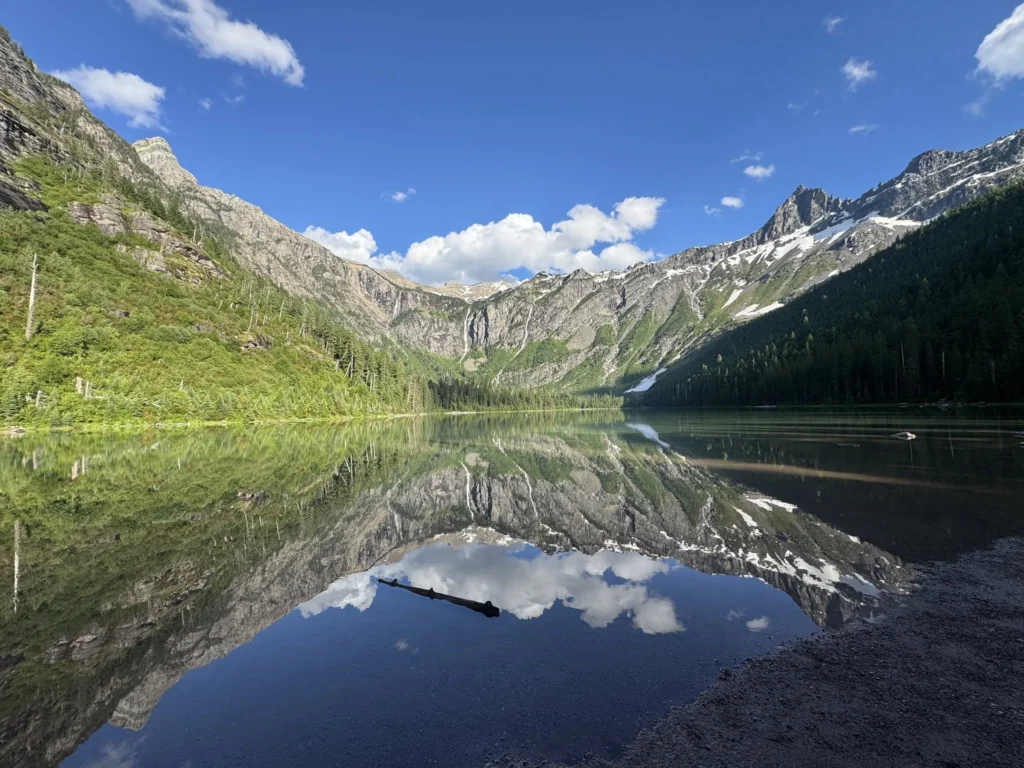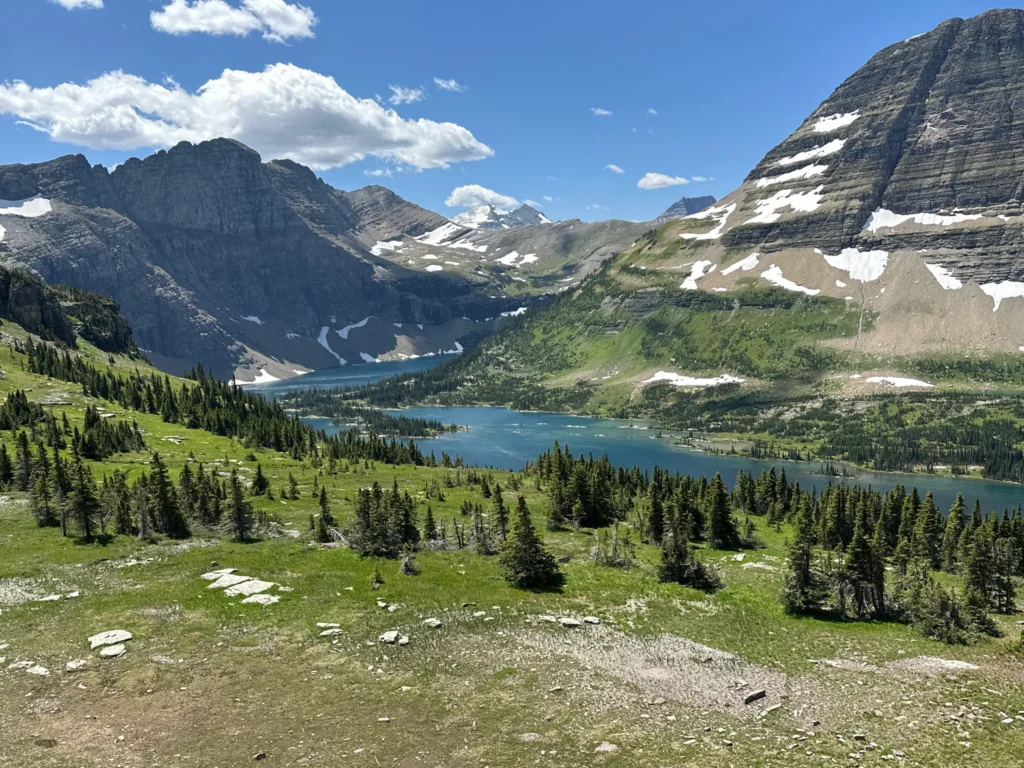Montana is home to some of the most breathtaking national parks in the United States, embodying a rich tapestry of natural beauty and diverse ecosystems. These protected areas serve not only as a sanctuary for flora and fauna but also as vital spaces for human connection with the great outdoors. The state’s national parks, such as Glacier National Park and Yellowstone National Park, showcase dramatic landscapes ranging from rugged mountains and glaciers to lush forests and tranquil lakes. Each park offers unique recreational opportunities and a chance to witness the splendor of nature in its purest form.
The preservation of Montana’s stunning natural environments is crucial for maintaining biodiversity and protecting wildlife habitats. National parks play a significant role in conservation efforts, ensuring that future generations will experience the same awe-inspiring vistas and ecological diversity. Visitors can immerse themselves in activities like hiking, wildlife watching, and photography while gaining a deeper appreciation of the delicate balance within these ecosystems. Moreover, such experiences foster a sense of stewardship among visitors, encouraging them to contribute to the protection of these incredible natural resources.
Exploring Montana’s national parks invites individuals to step away from urban life and discover the serenity and majesty of untouched landscapes. From the towering peaks of the Rocky Mountains to the sweeping prairies, each park offers its own unique charm and opportunities for discovery. The iconic views, breathtaking trails, and diverse wildlife not only provide excitement but also encourage a deeper understanding of the importance of environmental conservation. Prepare to embark on an adventure that highlights the wonders of these national treasures, as you connect with nature and explore the remarkable parks that Montana has to offer.
Glacier National Park: A Majestic Wonderland
Regarded as the “Crown of the Continent,” Glacier National Park is a remarkable testament to nature’s artistry. Situated in the northern Rocky Mountains of Montana, the park boasts more than 700 miles of hiking trails, inviting visitors to immerse themselves in its breathtaking landscapes. The iconic Going-to-the-Sun Road is a pivotal feature of the park, offering a stunning drive that showcases the grandeur of glaciers, towering peaks, and vibrant wildflower meadows. This scenic route is particularly notable for its engineering marvels, having been completed in the 1930s, allowing access to the heart of the park during the summer months.
The wildlife within Glacier National Park is as diverse as its geography, providing ample opportunities for wildlife observation. Visitors may encounter majestic grizzly bears, elusive mountain goats, and a plethora of bird species thriving in their natural habitats. The varied ecosystems found within the park foster a rich tapestry of life, making it a haven for nature enthusiasts and photographers alike. For those interested in history, Glacier National Park was established in 1910 and has since been recognized for its significant biodiversity and scenic beauty, earning its designation as a UNESCO World Heritage site.
Accessibility is an important consideration for potential visitors, with Glacier National Park being reachable via several airports. The nearest major airport is Glacier Park International Airport, located about a 30-minute drive from the park’s entrance. Entrance fees to the park are relatively modest, with options available for single-vehicle access and annual passes. The ideal seasons for visiting Glacier National Park are late spring to early fall, when most park facilities are operational, and the stunning landscapes are fully revealed. Regardless of the season, Glacier National Park promises an unforgettable adventure, inviting you to experience its natural splendor in all its forms.
Yellowstone National Park: The First National Park
Established in 1872, Yellowstone National Park holds the distinguished title of being the first national park in the world. Spanning into the states of Wyoming, Idaho, and Montana, this iconic park is a treasure trove of geothermal wonders and rich wildlife, attracting millions of visitors each year. Its formation was a pivotal moment in conservation history, as it paved the way for the establishment of numerous protected areas worldwide.
One of the most celebrated attractions within Yellowstone is Old Faithful, a geyser renowned for its predictable eruptions, which draw visitors from around the globe. In addition to Old Faithful, the park boasts other remarkable geothermal features, including the vibrant Grand Prismatic Spring and the mesmerizing Mammoth Hot Springs. Beyond these well-known highlights, Yellowstone is also home to hidden gems such as the lesser-explored Norris Geyser Basin and the charming scenic areas found along the park’s many trails, which offer a more tranquil experience away from the busier pathways.
Visitors to Yellowstone are encouraged to plan their trips around specific seasons to fully appreciate its natural beauty. Springtime showcases blooming wildflowers and abundant wildlife, while autumn presents a breathtaking display of fall foliage and clear-skied sunsets. For those seeking access to the park, there are five main entrance points: the North Entrance at Gardiner, the Northeast Entrance near Cooke City, the East Entrance along the scenic route to Cody, and the South and West Entrances leading to Teton. Entrance fees vary, with a standard vehicle pass currently priced at $35, valid for seven consecutive days.
Ultimately, Yellowstone National Park offers an unparalleled experience that melds breathtaking landscapes and captivating wildlife, making it an essential destination for nature lovers and outdoor enthusiasts alike. The park’s vast expanse is waiting to be explored, promising adventure at every turn as visitors uncover the natural wonders that define this magnificent corner of the United States.
Lewis and Clark National Historic Trail: A Journey Through History
The Lewis and Clark National Historic Trail is a remarkable tribute to the ambitious expedition commissioned by President Thomas Jefferson in the early 19th century. This trail spans over 3,700 miles, traversing an array of landscapes that showcase the diverse ecosystems of the United States, particularly in Montana. Following the original path that Lewis and Clark explored from 1804 to 1806, this historic route provides an invaluable opportunity for visitors to immerse themselves in a significant chapter of American history.
As you travel along the trail through Montana, you will encounter various access points that serve as excellent starting places for exploration. Notable stops include the Three Forks area, where the Missouri River branches into three rivers, and the Lewis and Clark Caverns State Park, known for its stunning limestone formations. These scenic landmarks offer insights into the challenges and discoveries faced by the expedition team, making them ideal settings for both historical education and outdoor recreation.
For those who wish to embark on this journey, planning is key. The best time to explore the Lewis and Clark National Historic Trail in Montana is during the warmer months, from late spring to early fall, when the weather is conducive to outdoor activities, including hiking and camping. It is advisable to check for any fees associated with state parks and historical sites, which can vary depending on location and season.
Along the route, interpretive centers provide educational resources and guided tours that enhance the visitor experience. Be sure to equip yourself with a good map and consider downloading companion apps that detail points of interest. Travelers should also be prepared for the varied terrain and ensure they have the necessary supplies for a safe and enjoyable journey through Montana’s rich historical landscape.
Bighorn Canyon National Recreation Area: Nature’s Hidden Gem
Bighorn Canyon National Recreation Area, nestled between Montana and Wyoming, is a breathtaking destination that exemplifies the exquisite beauty of America’s natural landscapes. This area is characterized by its majestic cliffs, pristine waters, and an array of wildlife, making it a sanctuary for nature enthusiasts and adventure seekers alike. The striking contrast between the canyon’s rugged rock formations and the serene waters of the Bighorn Lake creates stunning vistas that captivate visitors and photographers.
The recreation area offers an impressive range of recreational activities, catering to those keen on boating, fishing, hiking, and camping. Boating on Bighorn Lake provides an opportunity to explore the expansive waters while fishing enthusiasts can look forward to a rich catch, including species such as trout and bass. For those who prefer to stay on land, numerous hiking trails wind through the area, offering accessible routes for both beginners and experienced trekkers. Each trail unveils unique perspectives of the canyon, showcasing the intricate interplay of geology and nature.
This National Recreation Area is also steeped in rich Native American history, with historical sites and artifacts that reflect the heritage of the Crow and Northern Cheyenne tribes. Educational tours and signs scattered throughout the area provide visitors with insight into the significance of the land. To reach Bighorn Canyon, travelers can easily access it via Highway 37 from Montana or Highway 14 from Wyoming. It is recommended to check for permits related to fishing and boating, depending on your planned activities. The best seasons to visit are late spring and early fall when temperatures are mild, allowing for an optimal experience in both solitude and adventure.
Flathead Lake: A Scenic Escape
Flathead Lake, situated in the heart of Montana, is one of the largest natural freshwater lakes in the western United States. While not designated as a national park, its proximity to Glacier National Park makes it an exquisite destination for nature enthusiasts and adventure seekers alike. The lake is renowned for its crystal-clear waters, which offer stunning views of the surrounding mountains and provide excellent opportunities for various water sports, including kayaking, paddleboarding, and fishing.
Accessing Flathead Lake is convenient, as it lies just a short drive from Kalispell and is well-served by several highways. The Flathead Lake State Park provides numerous entry points, where visitors can find amenities such as picnic areas, restroom facilities, and campgrounds. There is a nominal fee for day-use access to these facilities, typically ranging from $5 to $10 per vehicle. In addition to water activities, the surrounding area features several hiking trails that cater to different experience levels, providing hikers with beautiful vistas and varied terrain.
The optimal time to enjoy Flathead Lake’s water activities typically falls between late spring and early fall, with peak conditions observed from June to September. This period also coincides with various local festivals that celebrate the lake’s rich cultural heritage and natural splendor, attracting visitors for art shows, music events, and food festivals. For those looking to experience outdoor excitement and relaxation, Flathead Lake serves as a perfect scenic escape that complements a visit to Glacier National Park.
The Challenges of Conservation: Protecting Montana’s Parks
Montana’s national parks are treasures that harbor diverse ecosystems, stunning landscapes, and rich wildlife. However, these natural wonders face significant conservation challenges, primarily due to the impacts of climate change, invasive species, and the increasing footprint of human activity. Climate change poses a threat to the delicate balance of these ecosystems by altering temperature patterns, affecting precipitation levels, and leading to more frequent wildfires. Such changes can have detrimental effects on native flora and fauna, thereby disrupting the intricate web of life that exists within these parks.
Invasive species present another considerable threat to Montana’s national parks. Non-native plants and animal species can outcompete indigenous species for resources, leading to biodiversity loss and the alteration of natural habitats. Efforts to manage and control these invaders are crucial, yet they require significant resources and collaboration among park authorities, scientists, and the community. Educating visitors about the importance of preserving native species is also an essential part of conservation efforts.
Visitors to Montana’s national parks play a key role in these conservation efforts. By practicing eco-friendly behaviors, such as staying on designated trails, cleaning up after meals, and minimizing noise pollution, individuals can help protect the parks while enjoying their beauty. Additionally, tourists are encouraged to participate in volunteer programs that are often organized by park services. These initiatives frequently involve habitat restoration, removal of invasive species, and educational outreach, providing invaluable support to conservation knowledge.
In conclusion, addressing the challenges of conservation in Montana’s national parks requires a combined effort from park authorities, scientists, and visitors. By understanding the impacts of climate change and invasive species and adopting eco-friendly practices, individuals can contribute positively to the ongoing preservation efforts. Furthermore, becoming involved in volunteer opportunities allows for a deeper connection to these natural wonders while aiding in their protection for future generations.
Plan Your Adventure: Tips for Visiting Montana’s National Parks
Visiting Montana’s national parks offers an opportunity to experience breathtaking landscapes and diverse wildlife. To make the most of your adventure, proper planning is essential. Start by identifying which parks you wish to explore; Glacier National Park and Yellowstone National Park are two of the most prominent options, each providing unique natural features and recreational opportunities.
When packing for your trip, consider essential items such as layered clothing, durable hiking shoes, and a reliable backpack. Weather in Montana can be variable, so preparing for all conditions is crucial. Additionally, bring high-quality binoculars for wildlife observation to enhance your experience safely and respectfully. Remember to pack a sufficient supply of water, snacks, and a first aid kit in case of emergencies.
Wildlife observation is a significant component of your visit to Montana’s national parks. To maximize your chances of seeing animals while ensuring their safety, maintain a respectful distance and use binoculars or a camera with zoom capabilities. Early morning or late afternoon are the prime times for spotting wildlife. Keep in mind that bears inhabit these areas, so carry bear spray and familiarize yourself with safe practices, such as how to react during a bear encounter.
Accommodations vary greatly, from campgrounds within the parks to nearby lodges and hotels. Booking in advance is often wise, as lodging can fill quickly, especially during peak seasons. Research options based on your activity preferences and budget. For those looking to enjoy the great outdoors, camping provides a unique experience surrounded by nature.
Prior to your visit, check the official park websites or contact visitor centers to obtain the latest information on park conditions, safety guidelines, and upcoming ranger-led programs. This information will enhance your experience and ensure a safe adventure. Proper preparation will enhance your exploration of Montana’s splendid national parks, allowing you to enjoy their wonders fully.
Join the Adventure in Montana’s National Parks
Montana’s national parks, including Glacier National Park and Yellowstone National Park, offer breathtaking landscapes, diverse wildlife, and an abundance of recreational activities. These parks not only provide stunning vistas and exhilarating outdoor experiences but also serve as vital ecosystems that require our respect and conservation efforts. As we have explored the unique features and attractions of these magnificent parks, it becomes clear that they are not just destinations but sanctuaries for natural beauty and biodiversity.
Visitors to Montana’s national parks can immerse themselves in various adventures, from hiking majestic trails and witnessing the grandeur of dramatic mountains to observing the unique wildlife that inhabits these protected areas. The captivating beauty of the vast forests, serene lakes, and expansive plains invites explorers to engage with nature in ways that can be both invigorating and restorative.
Moreover, embarking on a journey through these parks not only enriches your understanding of the environment but also fosters a connection with the earth that deepens appreciation for preservation. By prioritizing sustainable practices, we can ensure that future generations will have the opportunity to experience the wonders that Montana’s national parks have to offer. Each visit provides a chance to discover something new, whether it’s witnessing the subtle changes in the seasons or uncovering hidden trails. Therefore, we encourage readers to plan their own trips, share their experiences, and contribute to the ongoing dialogue about protecting these precious landscapes.
As the call to adventure echoes through the towering peaks and expansive valleys, let us all take part in preserving and celebrating Montana’s national parks. Your exploration can be a stepping stone towards advocacy for conservation, making each journey not only memorable but also purposeful. Embrace the adventure that awaits in this pristine wilderness, and be a part of a greater story woven through the fabric of Montana’s natural heritage.



